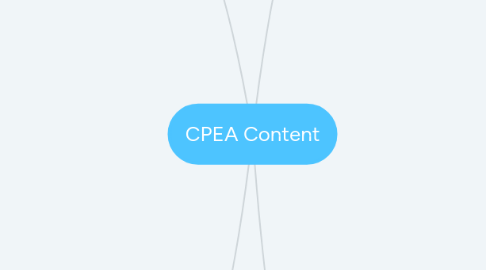
1. 1. Caring for Patients' and Care Teams' Mental Health
1.1. Topic 1: Connecting Mental Health Systems of Care
1.1.1. Outcome1: Increased coordination/efficacy/effectiveness of intervention and reduced duplication
1.1.2. Outcome 2: Improved provider sense of efficacy/support
1.2. Topic 2: Trauma Informed Care
1.2.1. Outcome 1: Improved ability to recognize signs of trauma
1.2.2. Outcome 2: Increased implementation of research-based intervention for patients impacted by traumatic experiences.
1.3. Topic 3:
1.3.1. Outcome 1:
1.4. Topic 4:
1.4.1. Outcome 2:
1.5. Building Resilience and Self Care into "the routine"
1.5.1. Better understanding.
1.5.2. Increased satisfaction and overall wellness.
1.6. Recognizing the role of a PT's psyche in their well-being.
1.6.1. Outcome 1:
1.6.2. Outcome 2:
1.7. Topic 7:
1.7.1. Outcome 1:
1.7.2. Outcome 2:
1.8. Topic 8:
1.8.1. Outcome 1:
1.8.2. Outcome 2:
2. 2. Leadership and communication within the healthcare team
2.1. Topic 1:
2.1.1. Outcome 1:
2.1.2. Outcome 2:
2.2. Topic 2:
2.2.1. Outcome 1:
2.2.2. Outcome 2:
2.3. Topic 3:
2.3.1. Outcome 1:
2.3.2. Outcome 2:
2.4. Topic 4:
2.4.1. Outcome 1:
2.4.2. Outcome 2:
2.5. Why is Leadership Important?
2.5.1. Outcome 1:
2.5.2. Outcome 2:
2.6. Practical Implementation of Leadership in Clinical settings.
2.6.1. Outcome 1:
2.6.2. Outcome 2:
2.7. Topic 7:
2.7.1. Outcome 1:
2.7.2. Outcome 2:
2.8. Topic 8:
2.8.1. Outcome 1:
2.8.2. Outcome 2:
3. 3. Systemic change within healthcare
3.1. integrated health care
3.1.1. increased referral to community resrouces
3.1.2. improved patient experience
3.2. screening for social contributors of health
3.2.1. increased support in health care for basic needs of patients (food, housing, childcare)
3.2.2. Outcome 2:
3.3. Topic 4:
3.3.1. Outcome 1:
3.3.2. Outcome 2:
3.4. Team based approach: everyone has a role to play from Dr. to developer.
3.4.1. Increased cooperation between multiple stakeholders
3.4.2. Change in perspective of how to change healthcare
3.5. How to revolutionize continuing/medical education
3.5.1. Inspired new ideas about how to most effectively teach
3.5.2. Teaching Drs. so they aren't tied to skills, fearful of them getting outdated, but rather able to learn how to learn medicine as it keeps evolving.
3.6. Topic 7:
3.6.1. Outcome 1:
3.6.2. Outcome 2:
3.7. Topic 8:
3.7.1. Outcome 1:
3.7.2. Outcome 2:
4. 4. Complementary approaches to traditional care
4.1. mindfulness training for health care providers
4.1.1. patients offered alternated modalities for treatment
4.1.2. Outcome 2:
4.2. social service providers embedded in health care
4.2.1. seamless transition to community resources for patients (direct handoff)
4.2.2. Outcome 2:
4.3. Topic 3:
4.3.1. Outcome 1:
4.3.2. Outcome 2:
4.4. Topic 4:
4.4.1. Outcome 1:
4.4.2. Outcome 2:
4.5. Topic 5:
4.5.1. Outcome 1:
4.5.2. Outcome 2:
4.6. Topic 6:
4.6.1. Outcome 1:
4.6.2. Outcome 2:
4.7. Topic 7:
4.7.1. Outcome 1:
4.7.2. Outcome 2:
4.8. Topic 8:
4.8.1. Outcome 1:
4.8.2. Outcome 2:
